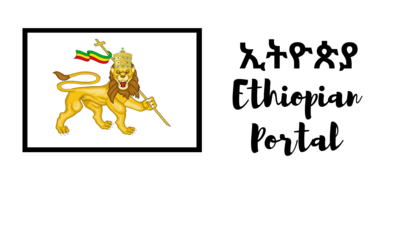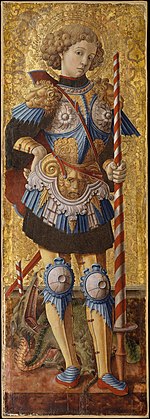Introduction
Federal Democratic Republic of Ethiopia የኢትዮጵያ ፌደራላዊ ዴሞክራሲያዊ ሪፐብሊክ (Amharic) | |
|---|---|
| Anthem: ወደፊት ገስግሺ ፣ ውድ እናት ኢትዮጵያ (English: "March Forward, Dear Mother Ethiopia") | |
 | |
| ISO 3166 code | ET |
Ethiopia, officially the Federal Democratic Republic of Ethiopia, is a country located in the Horn of Africa region of East Africa. It shares borders with Eritrea to the north, Djibouti to the northeast, Somalia to the east and southeast, Kenya to the south, South Sudan to the west, and Sudan to the northwest. Ethiopia covers a land area of 1,112,000 square kilometres (472,000 sq. miles). , it is home to around 128 million inhabitants, making it the 13th-most populous country in the world, the 2nd-most populous in Africa after Nigeria, and the most populated landlocked country on Earth. The national capital and largest city, Addis Ababa, lies several kilometres west of the East African Rift that splits the country into the African and Somali tectonic plates.
Anatomically modern humans emerged from modern-day Ethiopia and set out for the Near East and elsewhere in the Middle Paleolithic period. Southwestern Ethiopia has been proposed as a possible homeland of the Afroasiatic language family. Ethiopia is Africa's oldest independent country and one of the oldest in the world with over 3000 years of history. Apart from a five-year occupation by Mussolini's Italy, Ethiopia has never been colonised. In 980 BC, the Kingdom of D'mt extended its realm over Eritrea and the northern region of Ethiopia, while the Kingdom of Aksum maintained a unified civilization in the region for 900 years. Christianity was embraced by the kingdom in 330, and Islam arrived by the first Hijra in 615. After the collapse of Aksum in 960, the Zagwe dynasty ruled the north-central parts of Ethiopia until being overthrown by Yekuno Amlak in 1270, inaugurating the Ethiopian Empire and the Solomonic dynasty, claimed descent from the biblical Solomon and Queen of Sheba under their son Menelik I. By the 14th century, the empire had grown in prestige through territorial expansion and fighting against adjacent territories; most notably, the Ethiopian–Adal War (1529–1543) contributed to fragmentation of the empire, which ultimately fell under a decentralization known as Zemene Mesafint in the mid-18th century. Emperor Tewodros II ended Zemene Mesafint at the beginning of his reign in 1855, marking the reunification and modernization of Ethiopia. (Full article...)
Selected article -
Gideon Force was a small British and African special force, a Corps d’Élite with the Sudan Defence Force, Ethiopian regular forces and Arbegnoch (Amharic for Patriots). Gideon Force fought the Italian occupation in Ethiopia, during the East African Campaign of the Second World War. The leader and creator of the force was Major (later Colonel) Orde Wingate. At its peak, Gideon Force had fifty officers, twenty British NCOs, 800 trained Sudanese troops and 800 part-trained Ethiopian regulars, a few mortars but no artillery and no air support, except for intermittent bombing sorties.
The force operated in difficult country at the end of a long, tenuous supply-line, on which perished nearly all of the 15,000 camels used as beasts of burden. Gideon Force and the Arbegnoch ejected the Italian forces commanded in Ethiopia by General Guglielmo Nasi (the conqueror of British Somaliland). The campaign took six weeks; 1,100 Italian and 14,500 Ethiopian troops were captured along with twelve guns, many machine-guns, rifles, much ammunition and over 200 pack animals. Gideon Force was disbanded on 1 June 1941, Wingate resumed this substantive rank of Major and returned to Egypt, as did many of the troops of Gideon Force, who joined the Long Range Desert Group (LRDG) in the Eighth Army. (Full article...)Selected biography -

General images -
Related portals
Geography
Countries
WikiProjects
Portal:Ethiopia/Projects
Things you can do
- Visit the Ethiopian Wikipedians' notice board.
- The noticeboard is the central forum for information and discussion on editing related to Ethiopia.
- Comment at the Ethiopian deletion sorting page.
- This page lists deletion discussions on topics relating to Ethiopia
Selected pictures
Did you know -

- ... that Asfaw Yemiru's school educated over 120,000 Ethiopian students?
- ... that the government of Ethiopia's SNNP Region supported local governments calling for a referendum to secede from the region?
- ... that Tsadkan Gebretensae, one of the top commanders of Tigray forces in the conflict against the Ethiopian government, previously served as chief of staff of the Ethiopian National Defense Force?
- ... that Aguil Chut-Deng took 22 child refugees from South Sudan to Ethiopia during civil war so that they could attend school?
- ... that Quintin Johnstone advocated giving control of an American-governed law school to native Ethiopians?
- ... that when journalist Pierre Nadeau reported on the 1973 famine in Ethiopia, his suggestion for viewers to donate to Oxfam led to an inundation of contributions the next day?
In the news
- 1 March 2024 – War in Amhara
- Intense fighting between the Fano militia and the Ethiopian government breaks out in Bahir Dar, the capital of the Amhara Region. (The East African)
- 23 February 2024 – War in Amhara
- An Ethiopian airstrike kills at least 15 people and injures more than 20 others in North Shewa, Ethiopia, with many of the victims fleeing clashes between Fano and the Ethiopian government. (Reuters) (The East African)
Categories
Topics
Other Ethiopia-connected Wikipedias
Portal:Ethiopia/Wikipedias
Wikimedia
The following Wikimedia Foundation sister projects provide more on this subject:
-
Commons
Free media repository -
Wikibooks
Free textbooks and manuals -
Wikidata
Free knowledge base -
Wikinews
Free-content news -
Wikiquote
Collection of quotations -
Wikisource
Free-content library -
Wikiversity
Free learning tools -
Wikivoyage
Free travel guide -
Wiktionary
Dictionary and thesaurus







































































